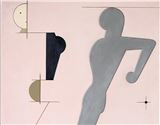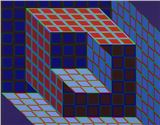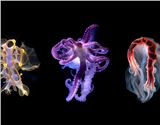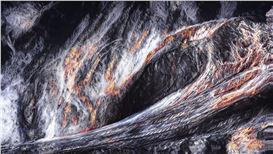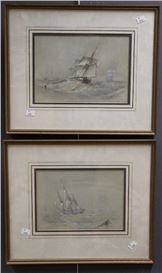Taikang Art Museum’s Archival of Media and Technology in Arts
AI, robotics, and digital pioneers in an immersive exhibition at Beijing’s Taikang Art Museum
Sierrah Floyd / MutualArt
Aug 06, 2025
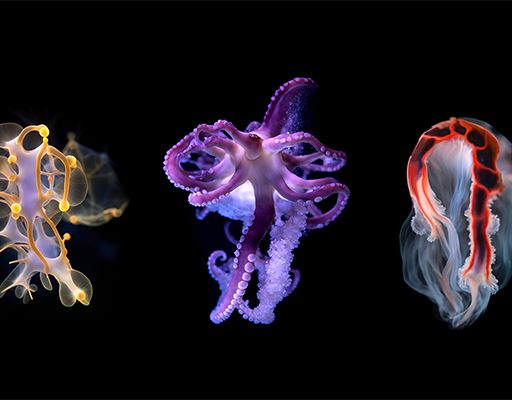
Curators William Latham, Tang Xin and Zhou Yi came together for an exploration and anthropological display of the enmeshment of new media and technology in the arts since the 1950s and where it has led artists today. The timeline of technology was split into three sections: Contemporary, History and Education. Most of the exhibition covered more recent work by living artists. The Contemporary section opened the exhibition in galleries 1-3 and 5 and continued upstairs in galleries 6-8. The History section separated the Contemporary section in gallery 4, while the Education section concluded the show in gallery 9. The exhibition acknowledged works and pioneers like the “Mother of Computer Art”, Benoit Monar, Harold Cohen – the creator of AAARON, one of the earliest robot artists (machines) – and trailblazer in 3D animation, Craig Reynolds.
The Education and History sections provided an in-depth overview of how digital art was conceived for those new to the subject. The majority of the exhibition sought to bring light to how the work of these pioneers made groundbreaking discoveries and contributions to the medium which has resulted in today’s experimentation and exploration. The Contemporary section showcased robotic installations, AI-generated video arts, interactive art, algorithm-led and computer art. In this way, curators Tang, Latham, and Zhou highlighted the new wave of AI-driven art and took on an archival and archeological approach to the field of digital and new media arts.
Walking into the Taikang Art Museum (TAM), I was immediately met by William Latham and Stephan Todd’s Human Mutator Azure, 2024, a digital art piece made from the Mutator Form Grow software, physics equations, and AI. Together, these elements generate a microscopic, three-dimensional view of how germs growing in a petri-dish would look if they had a primary color palette.
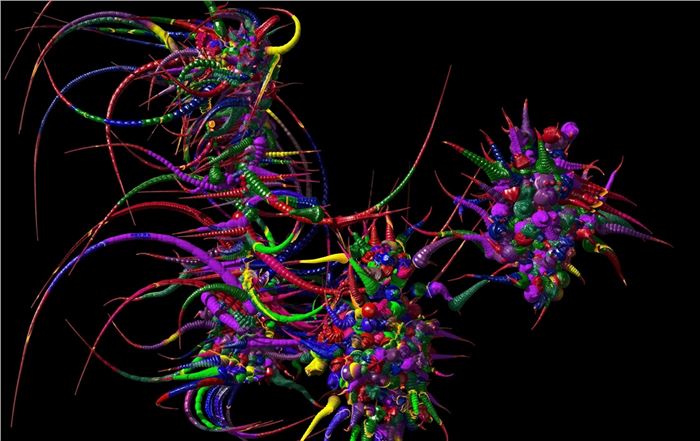 William Latham, Stephan Todd, Human Mutator Azure, 2024, Form Grow, Physics, and AI software, Courtesy of the Museum
William Latham, Stephan Todd, Human Mutator Azure, 2024, Form Grow, Physics, and AI software, Courtesy of the Museum
The generative software whirrs in cycles, making unique yet similar tails which extend from their germ-like centers, one atop the other. They fill the screen over and over again. The color palette alters similarly to Windows’ first generation and the ink cartridges you buy for your home printer. Azure is an algorithmic piece which responds to the movements that viewers make, constructing the images seen on the screen. Unaware of this at first, my initial question for the piece was: What is motivating the movement to occur? Now with the knowledge that it is indeed the human, I speculate that algorithmic generative intelligence like this might need humans to support their output, what happens when that stored information feeds its creativity?
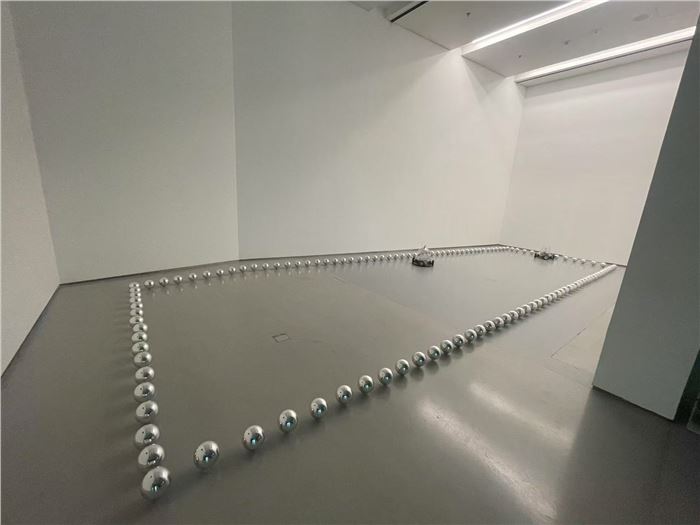 Chado Ao, I’m a Fish, 2018-ongoing, Installation, Courtesy of the Author
Chado Ao, I’m a Fish, 2018-ongoing, Installation, Courtesy of the Author
To the left and behind me in an alcove gallery, Chando Ao’s installation titled I’m a Fish, 2018-ongoing, is a fresh breath of air. Evenly spaced silver metal spheres that line the entire area of the gallery, a machine with a cube-shaped base and four gear-like wheels, carry a fish around the room. The fish is atop the machine in a perfectly clear, round glass sphere filled with water and clear globes around it. At its peak there’s a silver, curved cone and a wire connecting it back to the machine. There is also a black hole-shaped motorized creation which is also on wheels, seeming to respond to the first vehicle with a fish inside. I noticed that the silver globes lining the room were polished to perfection, so clear that my reflection was bouncing through the entire space. My initial thoughts were that it’s a quirky, funny, yet restrictive piece. The boundaries of the fish, viewer, machine, and space are all clearly allocated. Now upon reflection, I wonder who the viewer is. The fish? The visitor? The artist? A question which remains to be seen.
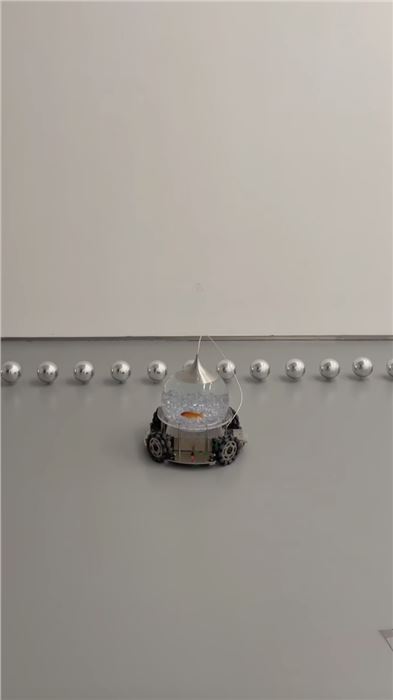
Chado Ao, I’m a Fish, 2018-ongoing, Installation, Courtesy of the Author
Moving on to the third gallery of the first floor, another piece which has caught both international acclaim and my eye, was Memo Akten and Katie Peyton Hofstadter’s Superradiance, 2024, a multiscreen video sound installation which was mesmerizing and then frightening. The sublime parts of the video were organic shapes that mimic plants and shapeshifted between complex shapes to the living organisms that we all know and love. As those organic shapes constructed bodies, it did not faze me. The frightening part was when I realized that the generative floral essence of the AI simulated faces. As the faces started to metabolize, I reached my limit. I was unsure if this installation had been prerecorded or if there was an algorithm that was imitating humans as it’s becoming more complex in its collection of information. According to the work’s website,
Superradiance leverages the cognitive phenomenon of ‘embodied simulation,’ in an immersive, ritual sanctuary, where invisible dancers embedded in animate environments transform forests, oceans, and deserts into extensions of our own bodies. And where technological mediation becomes a means of exploring embodied consciousness rather than escaping it.
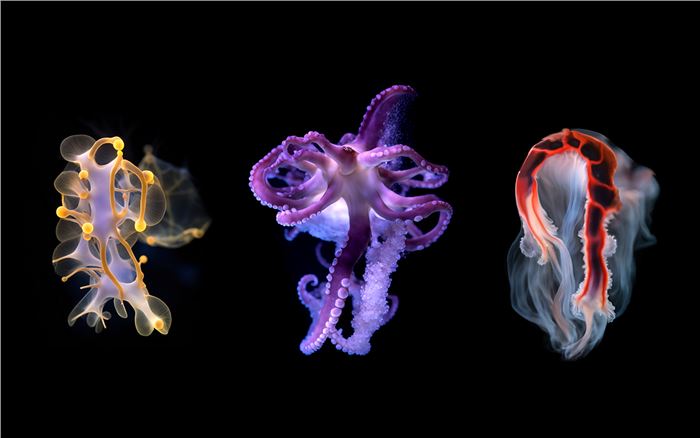 Memo Akten, Katie Peyton Hofstadter, Superradiance, 2024, multiscreen video, sound installation, Courtesy of the Museum
Memo Akten, Katie Peyton Hofstadter, Superradiance, 2024, multiscreen video, sound installation, Courtesy of the Museum
After reading about the duo’s goals in this endeavor, my understanding shifted. By frightening me, the work was actually doing its job. I was not able to flee into the sublime essence infused by almost psychedelic images of never-ending landscapes and close-ups of animals. Instead, I was confronted with humanity, and in that humanity, there was another foreign player. I was confronted with the fact that AI is here and collaborating with artists in a way that is not going to slow down anytime soon.
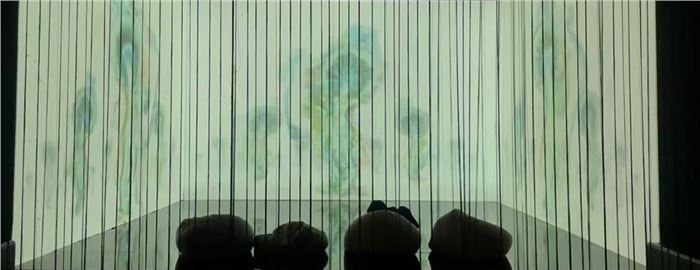 Memo Akten, Katie Peyton Hofstadter, Superradiance, 2024, multiscreen video, sound installation. Installation view. Courtesy of the Author
Memo Akten, Katie Peyton Hofstadter, Superradiance, 2024, multiscreen video, sound installation. Installation view. Courtesy of the Author
The remainder of the exhibition hosted a plethora of interactive installations with virtual simulations, futuristic garments, and an ongoing installation, Matrix, which I will be covering very soon.
I found the Historical and Educational sections to be so illuminating that they eased me into the longer-form history of what came before and enlightened the contemporary portion of the show. These kinds of additions are what I, as an academic, crave: to be subtly informed with context, human stories, and substantive research; to inquire – or leave at the gallery – what I may. Though I have my own qualms with AI, the exhibition succeeded as an archival and archeological feat on tech and new media art. It educated, exposed, and provided a logical timeline of this field of art making. I was intrigued, until it unsettled me. And that’s what is said of much of the unknown.
Creative Machine was on view at the Taikang Art Museum in Beijing, China, from November 15, 2024 to February 28, 2025.
For more on auctions, exhibitions, and current trends, visit our Magazine Page

